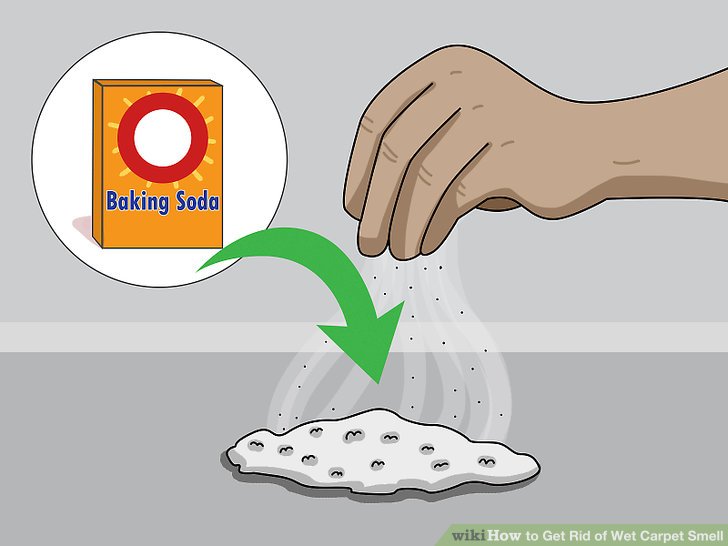How To Get Rid Of Wet Carpet Smell In Car

Ah, that new car smell. We all love it. But what about that not-so-new car smell... the one that hints at damp socks, forgotten gym bags, and maybe even a rogue milkshake incident? We're talking, of course, about the dreaded wet carpet smell. It's a problem every car enthusiast faces eventually, but the approach to tackling it can vary wildly depending on your ride.
The Enemy: Moisture and Microbes
Before we dive into solutions, let's understand the problem. That musty odor isn't just water; it's the result of mold and mildew flourishing in the damp environment created by trapped moisture. This moisture can come from leaks, spilled drinks, snow tracked in on your boots, or even a persistent condensation problem. The faster you address the issue, the less likely you are to develop a full-blown bacterial colony thriving in your floorboards.
The Weapons: Cleaning and Drying
Getting rid of the wet carpet smell boils down to two key steps: thoroughly cleaning the carpet and then completely drying it. But the *how* depends a lot on your vehicle.
DIY vs. Professional Detail: A Model-Specific Approach
Let's consider two very different scenarios. First, imagine you have a 2003 Honda Civic. It's a reliable workhorse, but the interior is starting to show its age. Maybe you spilled a soda on the passenger side floor. In this case, a DIY approach is often perfectly acceptable. You're likely dealing with a relatively small area, and the cost of professional detailing might outweigh the value of the car itself.
Now, picture a 2023 Porsche 911 Turbo S. A leaky window seal, perhaps? Suddenly, you have a significant moisture issue in a car worth hundreds of thousands of dollars. Here, professional detailing is almost mandatory. You need someone who knows how to properly remove and clean the carpets without damaging the delicate leather trim or sensitive electronics.
DIY Cleaning: The Honda Civic Approach
For older, less valuable cars, here’s a typical DIY approach:
- Assess the Damage: Identify the source of the moisture. Is it a spill, a leak, or condensation?
- Vacuum Thoroughly: Remove as much loose dirt and debris as possible. A shop vac is your best friend here.
- Apply Carpet Cleaner: Use a dedicated automotive carpet cleaner. Spot treat stained areas. Always test the cleaner in an inconspicuous area first to ensure it doesn't discolor the carpet.
- Scrub and Extract: Use a stiff brush to work the cleaner into the carpet fibers. A carpet extractor (rental or purchase) is ideal for removing the dirty water.
- Dry Completely: This is the most crucial step. Use a wet/dry vacuum to extract as much water as possible. Leave the windows open (if the weather permits) and use fans to circulate air. A dehumidifier can also speed up the drying process. Consider using moisture-absorbing products like baking soda or charcoal.
Professional Detailing: The Porsche 911 Turbo S Approach
For higher-end vehicles, or when dealing with significant water damage, professional detailing is the way to go. Here's what you can expect:
- Thorough Inspection: The detailer will identify the source of the moisture and assess the extent of the damage.
- Carpet Removal: In severe cases, the carpet may need to be removed entirely for proper cleaning and drying. This requires specialized tools and expertise to avoid damaging the interior.
- Steam Cleaning and Extraction: Professional-grade steam cleaners and extractors will be used to deep clean the carpets.
- Ozone Treatment: An ozone generator can be used to eliminate lingering odors and kill mold and mildew. This is a powerful tool, but it should be used with caution as ozone can be harmful to humans and animals.
- Drying and Reassembly: The carpets will be thoroughly dried and then carefully reinstalled.
Spec Table: Carpet Cleaning Tools
| Tool | DIY Grade | Professional Grade |
|---|---|---|
| Carpet Extractor | Bissell Little Green ProHeat | Mytee LTD12 |
| Carpet Cleaner | Chemical Guys Fabric Clean | Meguiar's D101 All Purpose Cleaner (diluted) |
| Ozone Generator | Enerzen Commercial Ozone Generator | Professional Ozone Shock Treatment (Performed by Certified Technician) |
Engine and Technology Considerations
The engine type usually won’t influence your wet carpet smell removal process. However, the technology inside your car *can*. Modern cars with complex electrical systems require more caution when dealing with water. A flooded ECU or damaged wiring harness can lead to expensive repairs. If you suspect water damage has reached the electronics, seek professional help immediately.
Real-World Driving Impressions (After Cleaning!)
After successfully removing the wet carpet smell, the difference in your driving experience is significant. No more musty odor assaulting your nostrils every time you get in the car. You can finally enjoy the fresh, clean scent of... well, whatever air freshener you choose! More importantly, you've prevented the growth of harmful mold and mildew, creating a healthier and more enjoyable driving environment.
Pros and Cons: DIY vs. Professional
DIY Cleaning
- Pros: Cheaper, Convenient, Sense of Accomplishment
- Cons: Can be time-consuming, May not be as effective, Risk of damaging interior if not done correctly.
Professional Detailing
- Pros: More thorough, Less risk of damage, Saves time and effort
- Cons: More expensive, Requires scheduling, May not be necessary for minor issues.
So, there you have it. A comprehensive guide to banishing that dreaded wet carpet smell from your beloved automobile. Whether you're tackling a minor spill in your daily driver or dealing with a more serious issue in your prized possession, remember to assess the situation carefully and choose the approach that best suits your needs and your vehicle's value.
Now, for the fun part: Do you think the "new car smell" is actually just a carefully formulated chemical cocktail, or is there something genuinely appealing about the materials used in new cars? Let the debate begin!
